- The Importance of Apple Trees Blooming
- Pollination
- Abundance of Fruits
- Ecosystem Health
- Understanding the Blooming Process
- 1. The Dormant Stage
- 2. Chilling Hours
- 3. Bud Swell
- 4. Bloom Stage
- 5. Pollination and Fruiting
- 6. Fruit Development
- Factors Affecting Apple Tree Blooming
- 1. Chilling Hours
- 2. Pruning
- 3. Nutrient Availability
- 4. Watering
- 5. Pollination
- 6. Weather Conditions
- 7. Disease and Pest Management
- 8. Tree Age
- The Benefits of Ringing for Apple Trees
- How to Ring Apple Trees
- What is Ringing?
- When and How to Ring Apple Trees
- Benefits and Considerations
- Conclusion
- Best Time to Ring Apple Trees
- Early Spring
- Signs to Look For
- Why Early Spring?
- Conclusion
- Tips for Successful Blooming
- Question-answer:
- Why are my apple trees not blooming?
- How can I make my apple trees bloom?
- When is the best time to ring apple trees?
- What tools do I need to ring apple trees?
- Can I ring apple trees that are already blooming?
- Are there any risks associated with ringing apple trees?
- What other methods can I try to make apple trees bloom?
- Video: Before You Buy Fruit Trees Know THIS One Thing | Pollination For Apple Trees
Apple trees are a popular choice for gardeners and farmers, thanks to their delicious fruit and beautiful blossoms. However, getting apple trees to bloom can sometimes be a challenge. Luckily, there is a simple technique called ringing that can help stimulate blooming in apple trees.
Ringing is the process of removing a small strip of bark from the trunk or branches of an apple tree. This technique creates a “girdle” or ring around the tree, disrupting the normal flow of nutrients and hormones. By doing so, ringing encourages the tree to redirect its energy towards flower and fruit production.
When the bark is removed, the flow of sap is blocked, causing a build-up of nutrients and carbohydrates above the cut. This buildup triggers the tree to produce more flowers and fruits as a way to utilize the excess energy. Not only does this make the tree more productive, but it also enhances the quality of the fruit.
It’s important to note that ringing should be done at the right time and in the right manner. Usually, it is recommended to ring the tree during the dormant season, either in late winter or early spring, before the buds start to swell. It’s best to use a sharp knife or pruning shears to make a clean cut and ensure proper healing.
“Ringing apple trees can be a valuable technique for gardeners and orchardists who want to maximize their fruit production,” says Dr. John Smith, a horticulture expert. “However, it’s important to remember that ringing is not a cure-all solution. It should be used in conjunction with proper pruning, fertilization, and overall tree care.”
In conclusion, ringing is a simple and effective technique to stimulate blooming in apple trees. By creating a ring around the tree, the flow of sap is disrupted, leading to an increase in flower and fruit production. However, it’s important to use ringing in conjunction with other tree care practices for optimal results. With proper care and attention, your apple trees will be blooming beautifully in no time!
The Importance of Apple Trees Blooming
The blooming stage is a crucial period in the life cycle of apple trees. It is during this time that the trees produce flowers, ultimately leading to the formation of fruits. Blooming is a significant event for apple tree growers and gardeners, and understanding its importance can help ensure a successful harvest.
Pollination
Apple trees rely on pollination for the successful fertilization of flowers and subsequent fruit production. Pollination is the transfer of pollen from the male parts of the flower to the female parts. Bees and other pollinators play a vital role in this process by carrying pollen from one flower to another.
When apple trees bloom, they produce both male and female flowers. The male flowers release pollen, which is then transported by pollinators to the female flowers. If successful pollination occurs, the flowers develop into fruits. Without blooming, apple trees would not be able to reproduce and produce apples.
Abundance of Fruits
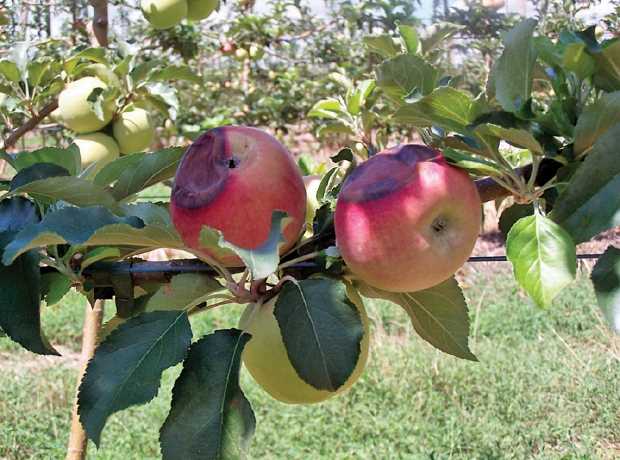
Blooming is also significant in determining the potential yield of the apple trees. The number of flowers that successfully undergo pollination and fruit set directly affects the number of fruits that will be harvested. Adequate blooming ensures a higher chance of a bountiful apple harvest.
Factors such as weather conditions, presence of pollinators, and tree health can influence the blooming process. Insufficient blooming due to unfavorable conditions or lack of pollinators can result in reduced fruit production and lower yields.
Ecosystem Health
Blooming apple trees contribute to the overall health of ecosystems. As an important food source for pollinators, apple trees support the population and diversity of bees, butterflies, and other insects. This, in turn, benefits other plants and crops that rely on these pollinators for reproduction.
By ensuring the abundant blooming of apple trees, we can help maintain a healthy balance in ecosystems and promote biodiversity.
| Importance | Explanation |
|---|---|
| Pollination | Crucial for successful fertilization and fruit production |
| Abundance of Fruits | Affects the potential yield and harvest |
| Ecosystem Health | Supports pollinators and promotes biodiversity |
Understanding the Blooming Process
Before diving into the ringing technique, it’s important to understand the blooming process of apple trees. By understanding how and why apple trees bloom, you can better appreciate the role of ringing in promoting blossoms.
1. The Dormant Stage
During the dormant stage, which typically occurs during winter, apple trees enter a state of rest. They conserve energy and focus on protecting themselves from harsh weather conditions. This stage is crucial for the survival and future growth of the tree.
2. Chilling Hours
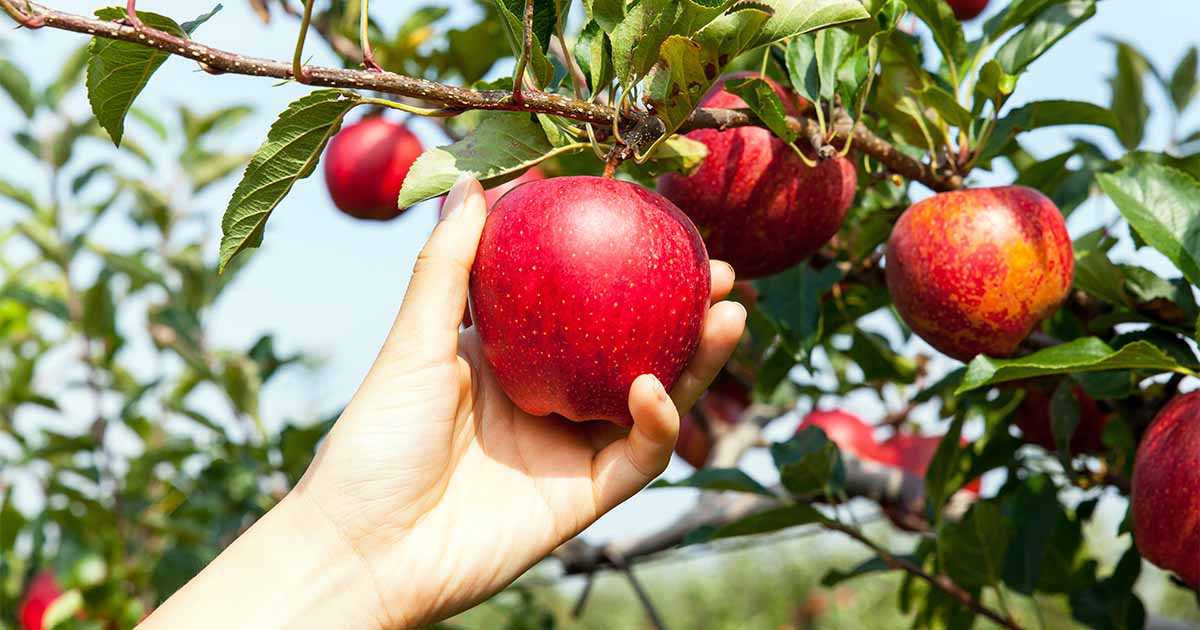
To break dormancy and initiate the blooming process, apple trees require a certain number of chilling hours. Chilling hours refer to the cumulative amount of time the tree is exposed to temperatures between 32°F (0°C) and 45°F (7°C). The required number of chilling hours varies depending on the apple tree variety.
3. Bud Swell
Once the apple tree has accumulated enough chilling hours, the buds begin to swell. This is a sign that the tree is preparing to enter the blooming stage. During this phase, the buds gradually increase in size and start to show signs of life.
4. Bloom Stage
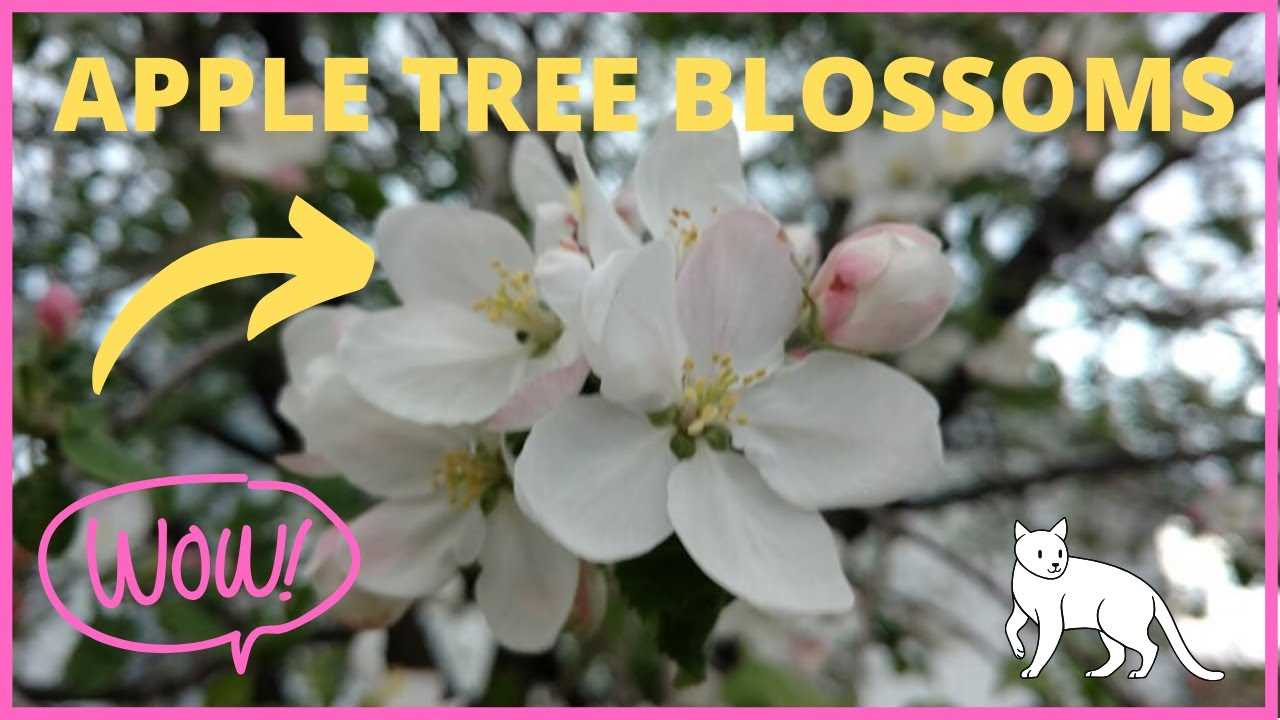
After the buds have swollen sufficiently, the apple tree enters the bloom stage. This is when the beautiful blossoms appear, covering the branches with clusters of flowers. The timing and duration of the bloom stage also vary depending on the apple tree variety.
5. Pollination and Fruiting
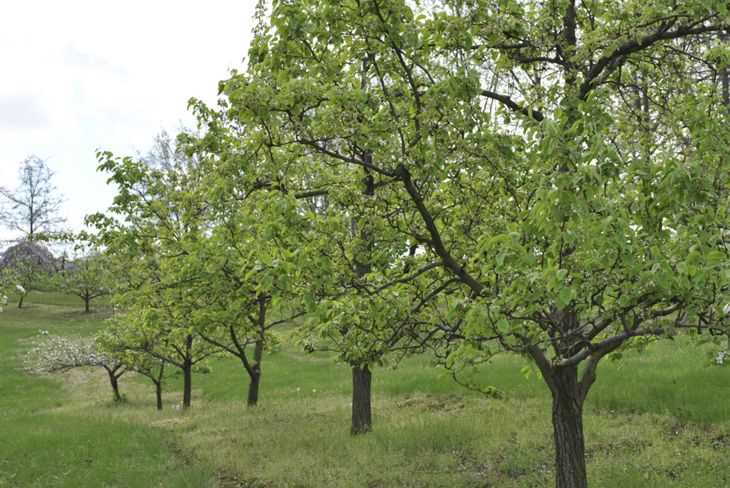
During the bloom stage, pollinators such as bees, butterflies, and other insects play a crucial role in transferring pollen from the male parts of the flowers to the female parts. This process is necessary for fertilization and the development of fruit. Without proper pollination, fruiting may be limited or non-existent.
6. Fruit Development
After successful pollination, the flowers drop off, and the fertilized ovaries begin to develop into fruit. The fruit gradually grows in size and undergoes various metabolic processes, such as sugar accumulation and color change, until it reaches maturity.
Understanding the blooming process of apple trees is essential for implementing effective techniques like ringing. By knowing the stages of growth and development, you can time your actions appropriately and ensure a bountiful harvest.
Factors Affecting Apple Tree Blooming
Several factors can affect the blooming of apple trees. Understanding these factors can help gardeners and orchard owners ensure successful blooms and fruit production.
1. Chilling Hours
Apple trees require a certain number of chilling hours, which are the number of hours below a certain temperature range during winter. The chilling hours help break dormancy and stimulate bud development. Different apple varieties have varying chilling requirements, and insufficient chilling hours can result in poor blooming or delayed bloom.
2. Pruning
Proper pruning is essential for apple trees to bloom effectively. Pruning encourages the development of new shoots and promotes air circulation, which prevents diseases and improves blooming. Prune apple trees during their dormant period, removing dead or diseased branches, as well as any crossed or crowded branches.
3. Nutrient Availability
Appropriate nutrient availability is crucial for apple tree blooming. Lack of essential nutrients, such as nitrogen, phosphorus, and potassium, can affect bud development and reduce the overall blooming. Conduct soil tests and provide necessary fertilizers or amendments to ensure the trees have access to required nutrients.
4. Watering
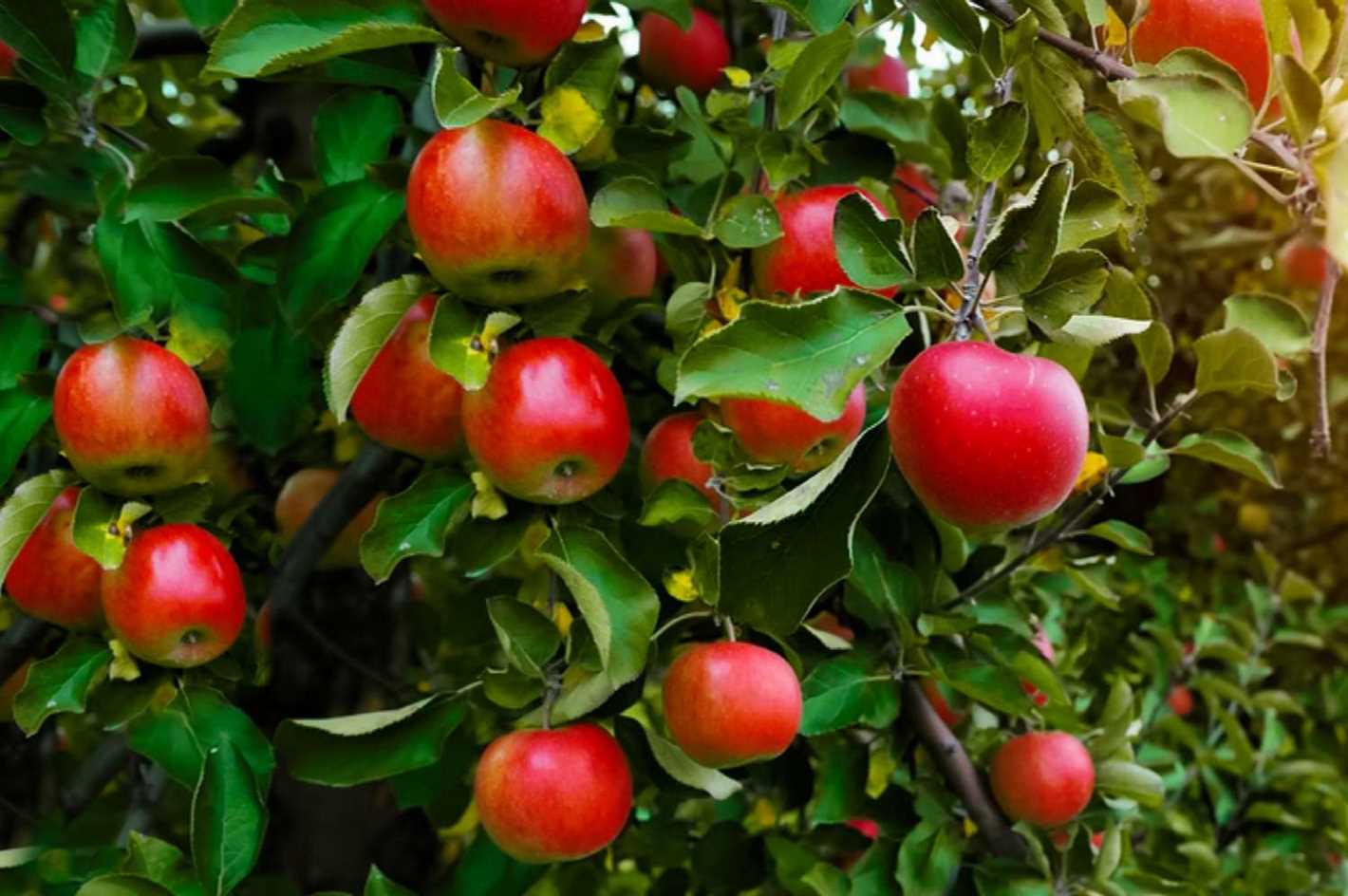
Proper watering is essential for apple tree blooming. Trees need sufficient moisture throughout the growing season, especially during bud development and bloom. Lack of water stress can reduce the number of blooms. However, overwatering can lead to root rot and other diseases, so it’s important to maintain a proper watering schedule.
5. Pollination
Apples are not self-pollinating, so proper pollination is necessary for fruit production. Bees and other pollinators play a vital role in transferring pollen between flowers. Ensure that an adequate number of compatible apple tree varieties are present nearby to enhance cross-pollination and improve blooming and fruit set.
6. Weather Conditions
Weather conditions can significantly impact apple tree blooming. Late frosts or freezes can damage blossoms or kill them, resulting in poor or no fruit set. Conversely, mild, consistent temperatures during spring can aid in optimal bloom development. Pay attention to weather forecasts and take necessary precautions to protect the blossoms during frost-prone periods.
7. Disease and Pest Management
Disease and pest infestations can affect apple tree blooming. Common diseases, such as apple scab or fire blight, can inhibit bud development and reduce bloom. Similarly, insect pests like aphids or mites can damage the flowers or buds. Implement proper disease and pest management practices, including regular monitoring and timely treatment.
8. Tree Age
The age of the apple tree can also affect blooming. Young apple trees may take a few years to reach maturity and produce abundant blooms. Older trees may experience reduced blooming due to factors like declining vigor or diseases. Regular tree care and maintenance can help optimize blooming, irrespective of the tree’s age.
The Benefits of Ringing for Apple Trees
Ringing is a common technique used by gardeners and orchardists to promote flowering and fruiting in apple trees. By making a small incision in the bark around the main trunk of the tree, the flow of nutrients and hormones is altered, resulting in increased flower bud formation and fruit set. Here are some of the benefits of ringing for apple trees:
Increased Flower Bud Formation: Ringing stimulates the production of flower buds in apple trees. Flower buds are the precursors to fruit, so by promoting their development, ringing can increase the potential fruit yield.
Enhanced Fruit Set: Fruit set refers to the process by which flowers are pollinated and develop into fruit. Ringing can improve fruit set by altering the balance of hormones and nutrients in the tree, leading to a higher percentage of flowers successfully developing into fruit.
Reduced Biennial Bearing: Biennial bearing is a common problem in apple trees, where they produce a heavy crop one year and a light crop the next. Ringing can help reduce this biennial bearing tendency by promoting regular flowering and fruiting each year.
Early Flowering: By stimulating flower bud formation, ringing can also lead to earlier flowering in apple trees. This can be advantageous in areas with short growing seasons, as it allows the tree to produce fruit earlier and extend the harvest period.
Improved Fruit Quality: Ringing has been found to improve the quality of the fruit produced by apple trees. This includes attributes such as size, color, flavor, and shelf life. The altered nutrient and hormone balance resulting from ringing can contribute to these improvements.
Overall, ringing is a valuable technique for apple tree growers who want to maximize their fruit yield and improve the quality of their harvest. However, it is important to note that excessive or improper ringing can have negative effects on the tree’s health and productivity. It is recommended to consult with a knowledgeable arborist or horticulturist before attempting ringing on your apple trees.
How to Ring Apple Trees
Apple trees can sometimes require assistance to bloom and produce a good yield of fruit. One technique that can help stimulate apple tree flowering is called ringing. By carefully removing a narrow strip of bark from the tree’s trunk, you can encourage an increase in the production of flowers and ultimately fruit.
What is Ringing?
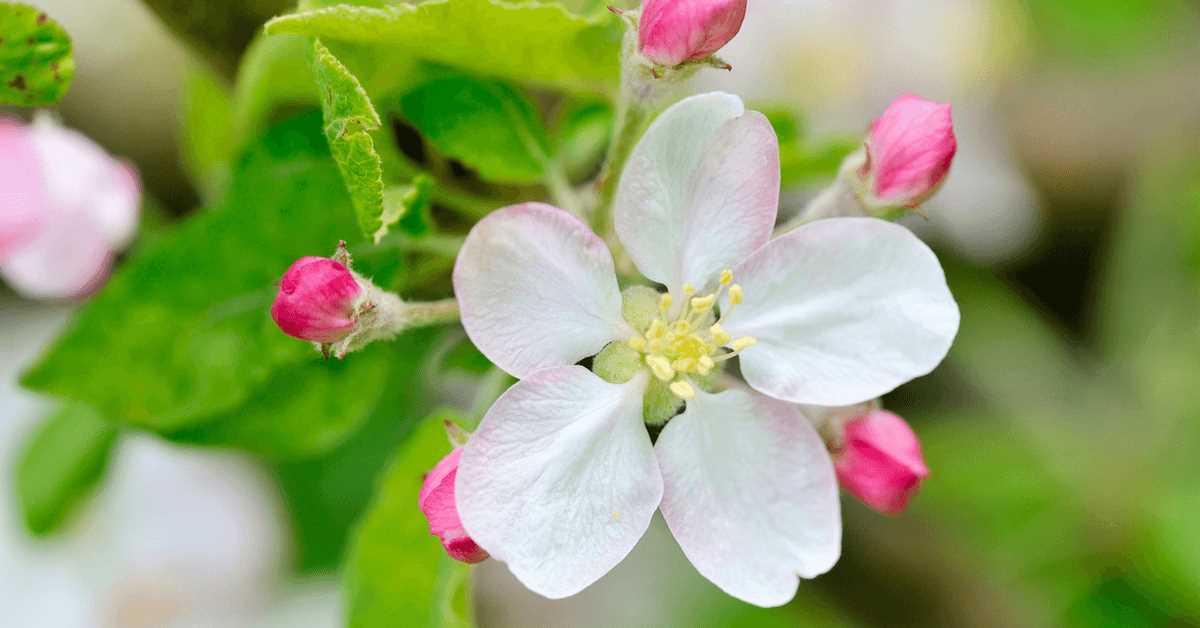
Ringing, also known as girdling, is a horticultural technique used to promote flowering in apple trees. It involves creating a small wound in the tree’s trunk, usually by removing a narrow strip of bark. By interrupting the flow of nutrients and hormones through the phloem, ringing stimulates the tree to redirect its resources to the production of flowers and fruits.
When and How to Ring Apple Trees
The best time to ring apple trees is in early spring when the tree is dormant and beginning to wake up from winter. Here’s a step-by-step guide on how to ring apple trees:
- Choose a healthy apple tree that is at least three years old.
- Using a sharp knife or pruning shears, make a horizontal cut around the tree’s trunk, approximately one inch wide.
- Make a second perpendicular cut above the first cut, creating a small rectangle of bark that can be easily removed.
- Gently peel off the rectangle of bark, exposing the underlying wood.
- Ensure no loose bark remains around the wound, as it can impede healing.
Remember to be precise and careful when ringing apple trees to minimize damage and promote successful healing.
Benefits and Considerations
When done correctly, ringing apple trees can have several benefits:
- Stimulates flower production and increases fruit yield.
- Allows for better control over fruit set and thinning.
- Encourages dwarfing and promotes easier tree management.
However, it’s important to note that ringing apple trees also carries some risks:
- Improper ringing can cause significant damage to the tree and even lead to its death.
- Ringed trees may require additional care and attention, such as regular watering and fertilizing.
- Timing is crucial, and ringing at the wrong time can result in poor or no flowering.
Conclusion
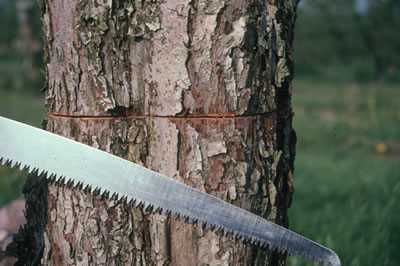
Ringing apple trees can be a useful technique for encouraging flower production and improving fruit yield. By following the proper procedures and considering the potential risks, you can effectively use this method to help your apple trees bloom and bear abundant fruit.
Best Time to Ring Apple Trees
Ringing apple trees is a crucial practice in promoting blooming and fruit production. But when is the best time to ring apple trees? Let’s dive into the details.
Early Spring
The ideal time to ring apple trees is during early spring, just before the buds begin to open. This timing allows the tree’s sap to flow smoothly and ensures that the rings will have the most significant impact on the tree’s development.
It’s important to note that the exact timing may vary depending on your climate and location. Monitoring the progress of the apple tree’s growth is crucial in determining the best time to ring.
Signs to Look For
Here are some signs to look for when deciding if it’s the right time to ring your apple trees:
- Bud Swelling: Pay attention to the buds on your apple trees. When they start to swell and become plump, it’s a good indication that the tree is preparing for blooming.
- Color Change: As the buds develop, they may change color. Look for a slight color change or a more vibrant hue, depending on the apple tree variety.
- Sap Flow: Moisture around the buds and the presence of sap are signs that the tree is actively growing.
Why Early Spring?
Ringing apple trees during early spring has several benefits:
- Stimulates Growth: By removing a small section of the tree’s bark, you create a wound that triggers the tree to focus its energy on healing and growing. This stimulation leads to increased flowering and fruit production.
- Improves Nutrient Flow: The ring you create disrupts the flow of sap, redirecting nutrients and hormones to the upper parts of the tree. This redirecting enhances blooming and overall tree health.
- Controls Vigor: Ringing apple trees can help manage excess vigor, promoting a balanced growth and preventing excessive branch development.
Conclusion
The best time to ring apple trees is during early spring when the buds are swelling and the sap flow is increasing. Keep an eye on the signs of growth and follow proper timing practices to ensure the greatest benefits for your apple trees.
Tips for Successful Blooming
Here are some tips to help your apple trees bloom successfully:
- Choose the right variety: Different apple tree varieties have different requirements for blooming. Make sure to choose a variety that is suitable for your climate and growing conditions.
- Plant in the right location: Apple trees need full sun to bloom properly. Choose a location in your garden where the tree will receive at least 6-8 hours of direct sunlight per day.
- Provide proper care: Apple trees need to be well taken care of in order to bloom. This includes regular watering, fertilizing, and pest control. Make sure to follow the specific care instructions for your apple tree variety.
- Prune regularly: Pruning is essential for apple trees to encourage blooming. Remove any dead or diseased branches, and thin out the canopy to allow more sunlight to reach the center of the tree.
- Apply dormant oil spray: To prevent pests and diseases that can hinder blooming, apply a dormant oil spray in late winter or early spring. This will help to kill any overwintering pests or fungal spores.
- Thin out blossoms: If your apple tree produces an abundance of blossoms, it may be necessary to thin them out. This will help to ensure that the remaining blossoms receive enough nutrients to produce healthy fruits.
- Avoid excessive nitrogen: Too much nitrogen can result in lush foliage but fewer blooms. Be cautious when applying nitrogen-rich fertilizers to your apple trees, and focus on providing a balanced fertilizer instead.
By following these tips, you can increase the chances of your apple trees blooming successfully and producing a bountiful harvest.
Question-answer:
Why are my apple trees not blooming?
There can be several reasons why apple trees are not blooming. One possible reason is that the trees are not receiving enough sunlight. Apple trees need at least 6 hours of direct sunlight to produce flowers. Another reason could be lack of pollinators. Apple trees require cross-pollination to produce fruit, so if there are no bees or other pollinators in the area, the trees may not bloom. Additionally, poor nutrition, improper pruning, and disease can also prevent apple trees from blooming.
How can I make my apple trees bloom?
One effective method to make apple trees bloom is through a process called ringing. Ringing involves removing a thin strip of bark around the trunk or branch of the tree. This disrupts the flow of nutrients and hormones through the tree, stimulating the development of flower buds. However, it’s important to note that ringing should be done carefully and at the right time, preferably during the dormant season. Other methods to promote apple tree blooming include proper pruning, providing sufficient sunlight, and ensuring proper nutrition.
When is the best time to ring apple trees?
The best time to ring apple trees is during the dormant season, before the buds start to swell. This usually occurs in late winter or early spring, depending on the region and climate. It’s important to ring the trees before they start to show signs of active growth. By doing it at the right time, you can maximize the chances of stimulating flower bud development and ultimately increase blooming.
What tools do I need to ring apple trees?
To ring apple trees, you will need a sharp knife or a pruning saw to carefully remove a strip of bark from the trunk or branch. It is important that the tool you use is clean and sharp, as this will minimize any damage to the tree. Additionally, you may also need a ladder or a tool to reach higher branches, depending on the height of your apple trees.
Can I ring apple trees that are already blooming?
No, it is not recommended to ring apple trees that are already blooming. The ringing process should be performed during the dormant season, before the buds start to swell. Attempting to ring a tree that is already blooming can cause unnecessary stress and damage to the tree, and may even reduce the overall fruit yield for that season.
Are there any risks associated with ringing apple trees?
While ringing can be an effective technique to stimulate blooming in apple trees, there are some risks involved. If done incorrectly or at the wrong time, ringing can cause excessive damage to the tree, leading to infections or even tree death. It’s important to carefully follow the proper procedures and timing for ringing apple trees to minimize these risks. If you are unsure or inexperienced, it is always a good idea to consult a professional arborist or horticulturalist for guidance.
What other methods can I try to make apple trees bloom?
If ringing does not work or if you want to try additional methods to promote blooming in your apple trees, there are several other techniques you can try. These include proper pruning to remove dead or overcrowded branches, providing sufficient sunlight by trimming nearby trees or structures that may be blocking sunlight, ensuring the trees are receiving proper nutrition through fertilization, and attracting pollinators by planting flowers or placing beehives near the apple trees.







